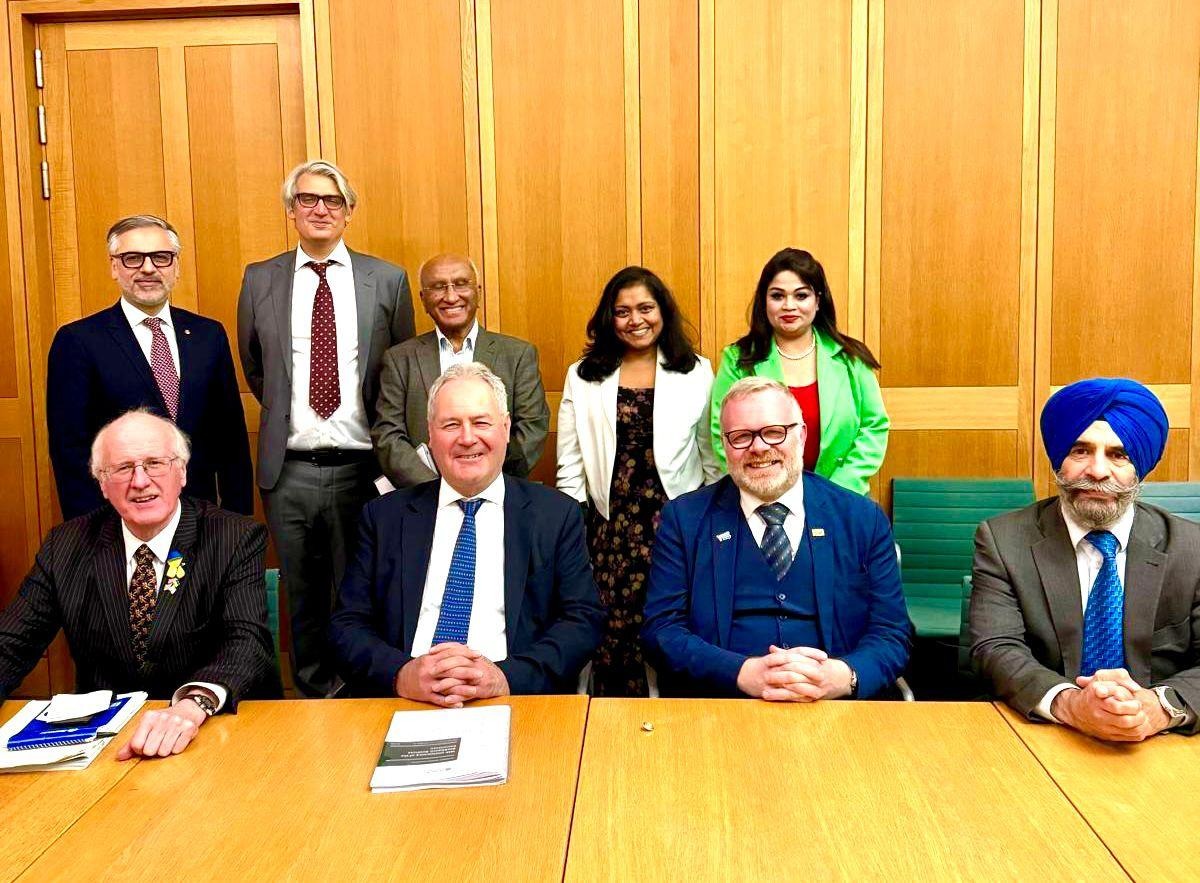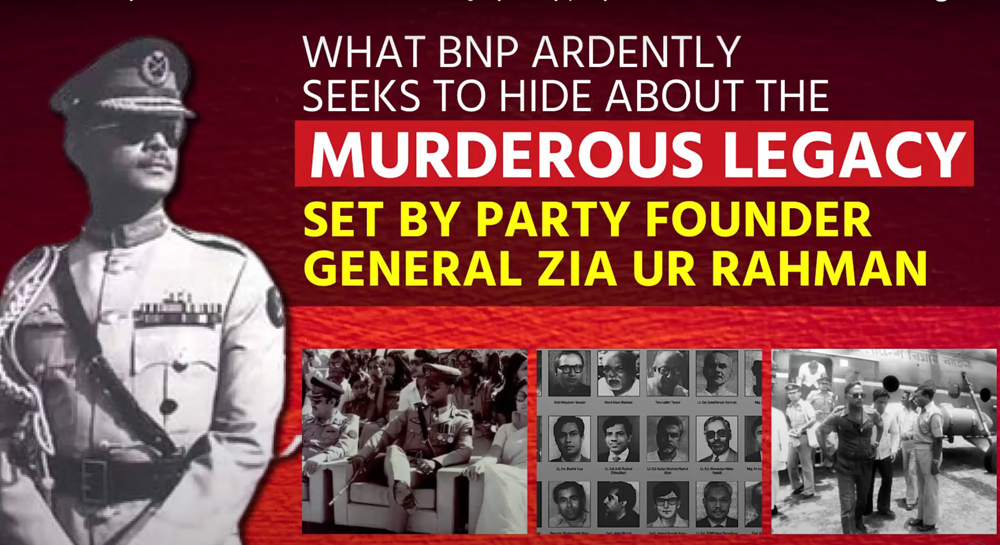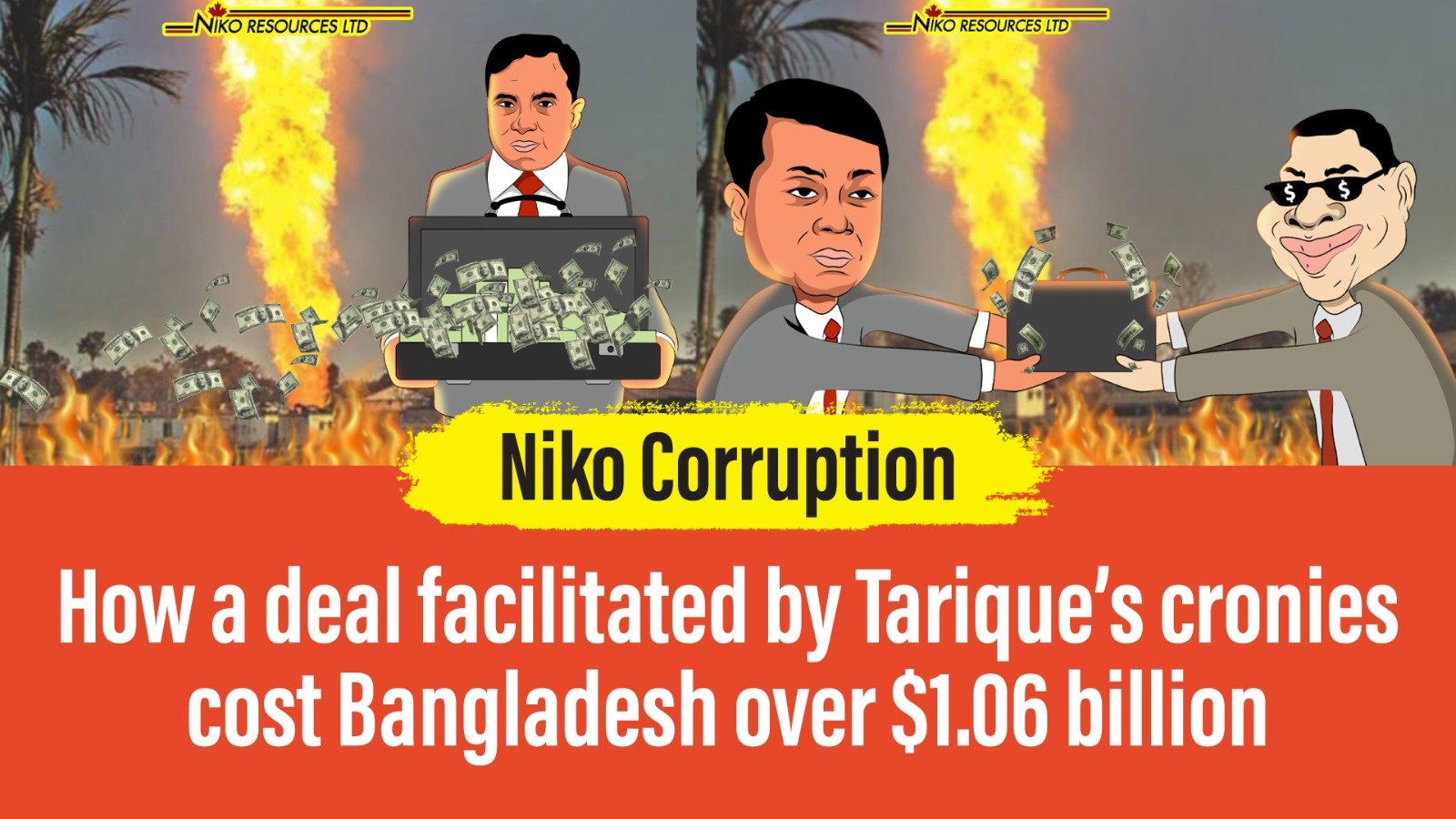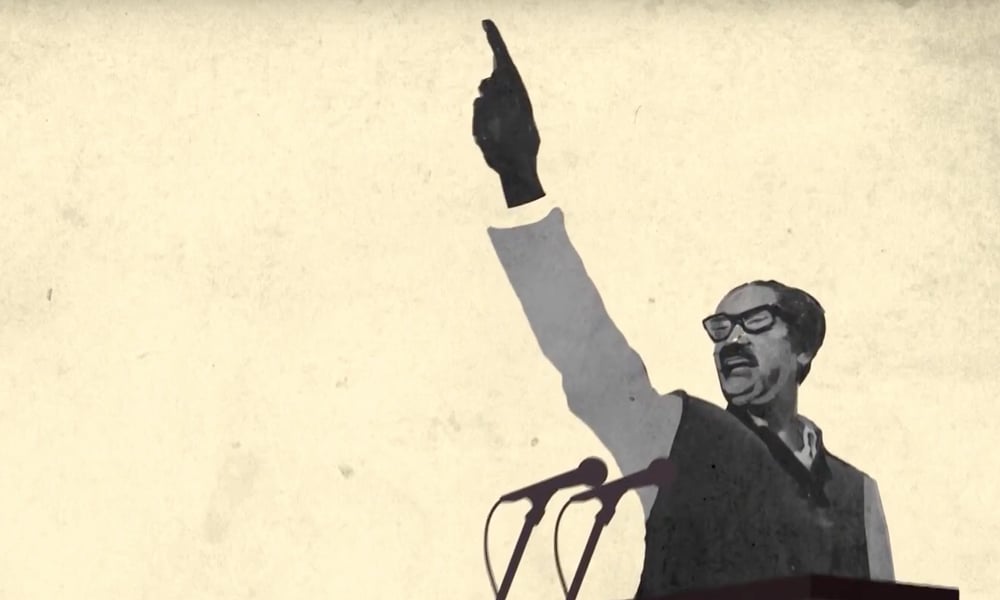After the end of the War of Independence, the Father of the Nation Bangabandhu Sheikh Mujibur Rahman started introducing democracy for the exploited people aiming to improve the destiny of 80 per cent of poor people of the country. He was also able to send the Indian troops back to their country within just three months, On March 26, 1972, he nationalized the country's banks, insurance, jute, textile, sugar and shipbuilding industries. But there rose a capitalist exploitative group outraged by Bangabandhu’s far-sighted decision. From the beginning of the Liberation War, the Pakistani agents of this country became active in the conspiracy against Bangabandhu by joining with the United States which opposed the independence of Bangladesh. Thirty years after the incident, the US State Department released secret documents that include the evidence of the blueprint of Ziaur Rahman and Khondakar Mostaq for killing Bangabandhu.
During the War of Liberation, Khondakar Mostaq, Taheruddin Thakur and Mahbub Chashi formed a link with US intelligence to keep Bangladesh as a confederation with Pakistan. As it was leaked, the expatriate government prevented Mostaq from attending the meeting as the representative of Bangladesh at that time. However, after independence, some military officials including Farooq-Rashid-Dalim-Huda gathered under one umbrella again under their patronage. They also held consultations with Ziaur Rahman, who was then serving as the Deputy Chief of Army Staff. Zia instructed them to go ahead on their own to assassinate Bangabandhu. Zia's direct support as a top military official gave the Mostaq clique the courage to go one step further. As a result, the world witnessed the worst massacre in the history of August 15, 1975, under the direct supervision of Zia-Mostaq. The founder of Bangladesh Bangabandhu Sheikh Mujibur Rahman and his family members were brutally killed on that fateful night.
Earlier, the Pakistanis failed to assassinate Bangabandhu to end the struggle for Bangladesh's independence. So, the Ziaur Rahman-Mostaq ring hatched the conspiracy with the Pakistani and US intelligence agencies to assassinate him after independence. This time they planned to make assassins from inside the country without taking the risk of sending them from abroad. Since 1972, they had been secretly organizing reckless army officers. Officials at the US Consulate in Dhaka sent several telegrams to Washington at the time. After the release of these secret documents of the US embassy in 2005, the direct and long-term role of Ziaur Rahman and Mostaq in the assassination of Bangabandhu became clear.
Who sent the assassin to kill Bangabandhu?
Bangabandhu Sheikh Mujibur Rahman emerged as the sole spokesperson and undisputed leader of the Bengali nation after his release from the Agartala conspiracy case in the face of intense mass agitation. Throughout the year 1969, he formed a public opinion on the streets demanding national elections. Fearing Bangabandhu's immense popularity, assassins were sent from West Pakistan to kill him. Bangabandhu came to know the information on December 20, 1969. The embassy officials also mentioned this in a document sent to the Foreign Ministry in Washington from the US Consulate in Dhaka on December 29 of that year.
The confidential US report states that Awami League President Sheikh Mujibur Rahman received news on December 20 of assassins who came to kill him. However, he did not want to pay heed to this information at first. But on December 22, he obtained evidence in this regard and from then on, his people started escorting him cautiously.
Andrew I. Kilgo, Political Officer at the US Consulate in Dhaka, sent the report to Washington from Dhaka on December 29, 1969. He was working in Dhaka from 1967 to 1970. In his report, he also expressed doubts about the security of Sheikh Mujib's life.
Long-time plot to assassinate Bangabandhu and the role of Zia-Mostaq
In 2005, the State Department released several classified documents. One of which was the various telegrams sent by US officials from Dhaka to Washington in the post-independence period of Bangladesh. According to Confidential Document No. 3156, US embassy official Newberry sent a telegram from Dhaka to his Washington State Department with alarming information in 1972. He said that Major Syed Farooq Rahman went to the US embassy in Dhaka to discuss arms procurement in 1972 without informing the Mujib government,
In another telegram, he reported that on July 11, 1973, the very next year, Major Farooq's brother-in-law Major Abdur Rashid also went to the US embassy to collect arms. At the time, Major Rashid claimed that he had come to the US embassy to discuss arms purchases for the army on behalf of a committee headed by then-Brigadier Ziaur Rahman.
Meanwhile, another telegram sent by US Ambassador Eugene Boster from Dhaka (Secret Document No. 2158) states that on May 13, 1974, Major Farooq sought the cooperation of the US government in overthrowing the government of Sheikh Mujibur Rahman on the instructions of a high-ranking Bangladesh Army officer. And the name of the high-ranking officer was none but the then Deputy Chief of Army Staff Ziaur Rahman.
Even in an interview in 1992, Farooq himself admitted that he had been plotting to assassinate Mujib for 15 months. He even met the then Deputy Chief of Army Staff Ziaur Rahman on March 20, 1975, and had open discussions. Hearing the final plan to implement the coup, Zia physically refused to lead from the front but instructed them (junior army officers) to move forward as their own. Meanwhile, after the assassination of Bangabandhu, they also held a meeting with Khondakar Mostaq to keep the civilian leadership in the post of President. Mostaq also agreed with their final plan to become the president.
Meanwhile, US journalist Lawrence Lifschultz opened up with shocking information about Khondakar Mostaq's involvement in the August 15 tragedy. In response to a question from Lawrence Lifschultz, the State Department said through Stephen Solarz, chairman of the US Congressional Subcommittee on Asia, that some US officials had previously been in contact with those involved in the August 15 coup. However, the US embassy informed the Mujib government about the communication.
But the State Department was embarrassed to say whom the embassy had leaked the information to. Even when journalist Lifschultz wanted to know whether the man was Mostaq or Ziaur Rahman, who was linked to CIA station chief Philip Cherry's spies, they did not give a clear answer. Originally, Zia-Mostaq's direct involvement in the covert communication that began with Mujib's assassination in 1972 encouraged the ring to proceed with the mission step by step.
Indian intelligence agency came to know the mission after Ziaur Rahman' had a meeting with Farooq-Rashid in June 1975 about the assassination of Bangabandhu. They informed Bangabandhu about it. However, Bangabandhu did not find it credible as he believed firmly that no Bengali could conspire to kill him. However, the then US Ambassador Eugene Boster gave surprising information about contemporary events. In an interview with US journalist Lifschultz, he said that the people who met with US embassy officials from November 1974 to January 1975 were in fact members of the group led by Deputy Chief of Staff Ziaur Rahman and politician Khandaker Mostaq.
Even in an interview with renowned journalist Anthony Mascarenhas, Major Rashid himself said, “Zia said that as a senior official he did not want to be directly involved. But if the junior officers are ready, then they should go ahead.”
On the basis of the overall investigation and all the information, Lawrence Lifschultz issued a statement in the court of Bangladesh in 2011 regarding the murder case of Colonel Taher. There too, he said, “Ziaur Rahman was directly involved in the assassination of Sheikh Mujib. Zia was one of the key players in the August coup. He could have stopped this coup if he wanted to. Because he was already aware of this conspiracy.”
Meanwhile, after the assassination of Bangabandhu, Khondakar Mostaq declared himself the President of Bangladesh. He then appointed MR Siddiqui, a relative of the murderer Major Rashid, as Bangladesh's ambassador to the United States and sent a message to the US embassy in Dhaka to keep Farooq-Rashid safe. Boster, the US ambassador to Dhaka, sent a secret message to the US State Department at that time.
Originally, Jamaat and its allies Al Badr, Al Shams and Razakars, allies of Pakistani murderers and rapists, failed to block Bangladesh's path to independence in 1971. Since independence, they started secretly conspiring to destabilize the country. Ambitious army officers Ziaur Rahman and Khandaker Mostaq realized the attitude of the extremist and capitalist groups and set up the scenario to assassinate Bangabandhu in order to seize power. As a result, Bangabandhu had to die at the hands of a group of reckless army members on the night of August 15, 1975. Even the Mostaq-Ziaur Rahman did not want to stop by just killing Bangabandhu, they even killed Bangabandhu's entire family that night to ensure their long-term power. Even Bangabandhu's infant son Sheikh Russell did not get spared from these beasts.














